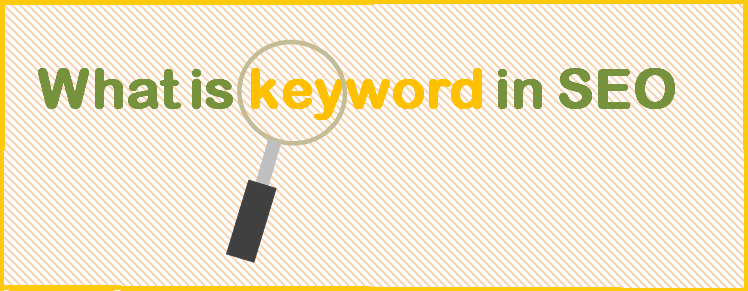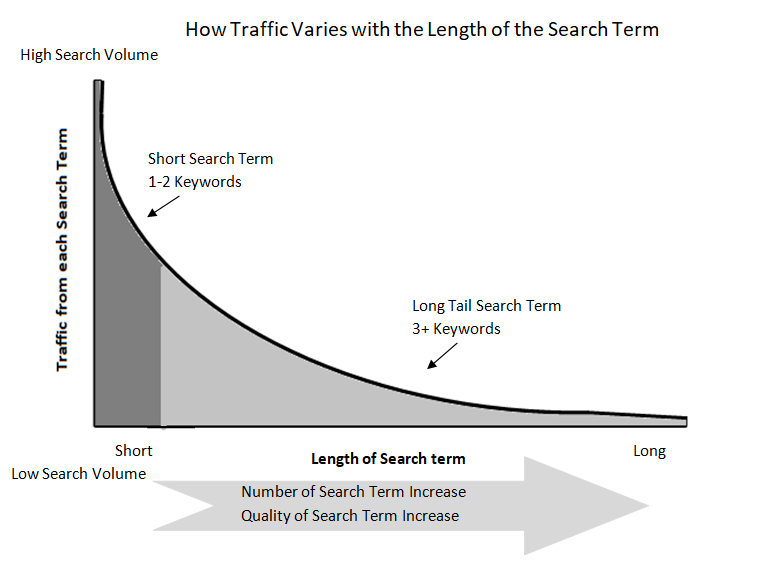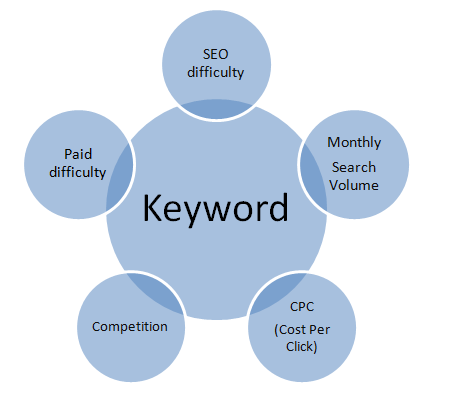
Before going to start with the topic ‘What is keyword in SEO’, we need to know at first what keyword is. Keyword refers to the words or phrases that we write in the search box of any search engine to find the solution of a problem. It can be a single word or 2-3 word phrase, many words, long-tail phrases, etc. So, we can get two terms on the discussed topic keyword.
- Short Tail Keyword
- Long Tail Keyword
Short Tail keyword: Short tail keywords are phrases that constitute one or two words only. These types of keywords have a huge monthly search volume of searches per month. But they are highly competitive. ‘SEO’ or ‘SEO Agency’ can be an example of a short tail keyword.
Long Tail Keyword: Long Tail Keywords are phrases that constitute three or more than three words. These types of keywords are commonly specific with the search to find accurate matching that they are looking for. Generally, they have less monthly search volume. Also, these keywords are less competitive but visitors are more engaged and in most cases ready to buy. These keywords have high-converting power.

Keyword property: Every keyword has its own property. It shows few characteristics to search engines. These properties are discussed below.
Monthly search volume: Search volume is simply the number of searches for a particular keyword in a search engine. When this measure is calculated during a month it is called monthly search volume.
Competition: Keyword Competition is a measure of estimating how difficult it will be to rank on the search engine’s first page for a keyword. There are some Keyword Competition Tools to check that can help you to analyze keyword competition.
CPC: CPC refers to the average cost per click. This measure is used if you want to pay Google for a keyword to be seen as an advertisement. The CPC of a keyword is $20.00. It means that people are spending $20 every time for someone who is searching for that keyword clicks on an advertisement shown in the blog. Depending on the CPC value we find variations in keywords like higher CPC keyword, lower CPC keyword
SEO Difficulty: SEO difficulty refers to the estimated competition in organic search. The higher the number of SEO Difficulties, the more competitive the keyword is.
Paid difficulty: Paid difficulty refers to the estimated competition in paid search. The higher the number of Paid difficulties, the more competitive the keyword is.

Relationship between SEO and Keyword
SEO is the process of optimizing the content both inside (on-page SEO) and outside (off-page SEO) under a keyword for the target of ranking it in the search engine result page. So, from the definition of SEO, it is obvious that keyword plays an important role in search engine optimization (SEO). In other words, SEO is impossible without keywords. All the actions of Internet search are done depending on the keyword. Web crawlers crawl and index the content depending on keyword. The search engine includes the content in the search result page and renders a high ranking if the content is well optimized under the target keyword. Thus, SEO and Keywords are directly connected to offer strictly justified searching results in response of any search. So, proper selection of keywords is highly essential in doing successful SEO.
Use of Keyword in on-page SEO
Keyword selection is the foundation step of On-page SEO. In almost every step of On-page optimization, we need to focus on this foundation step. In on-page optimization, keyword is used in some Meta tags like title Meta tags, description Meta tags, heading Meta tags, alt texts, etc. URL structure of a content page should match on the searching keywords. So, the success of on-page optimization depends on keywords.
Use of Keyword in off-page SEO
In off-page SEO, link building with authority sites is an important process of optimizing content. For the target of ranking a page, Google follows how many sites are linked to that page. In the link-building process, the power of keywords is still evident and important. In this case, targeted keywords are used as anchor texts for internal linking and inbound or outbound link building from other websites. It helps certain pages rank well on search engines and drives visitors.
Use of keywords in content optimization
Content SEO is a part of On-page SEO that maintains keyword optimization of the content. In doing content SEO you need to place your target keyword in the heading, body, and footer of the content in a balanced position to inform search engines regarding your contents ins and outs. Generally, 2% keyword density is accepted by Google and more of it is regarded as spam content.
Conclusion:
The keyword is not only a key of your content but also a key of your service or business because it can drive huge traffics and high conversion if successful SEO is done on that keyword. Thus, keyword and SEO of content work together intensely to rank it in a higher position on the search engine result page. One cannot go in absence of other.
Related Searches:
